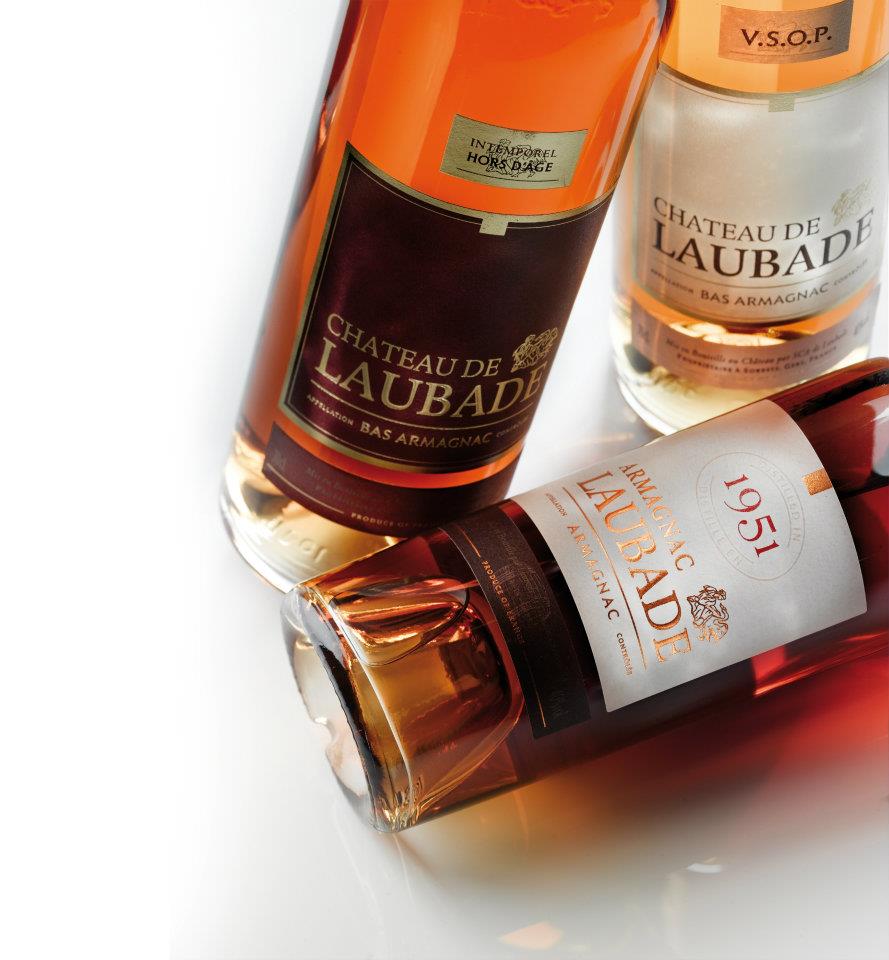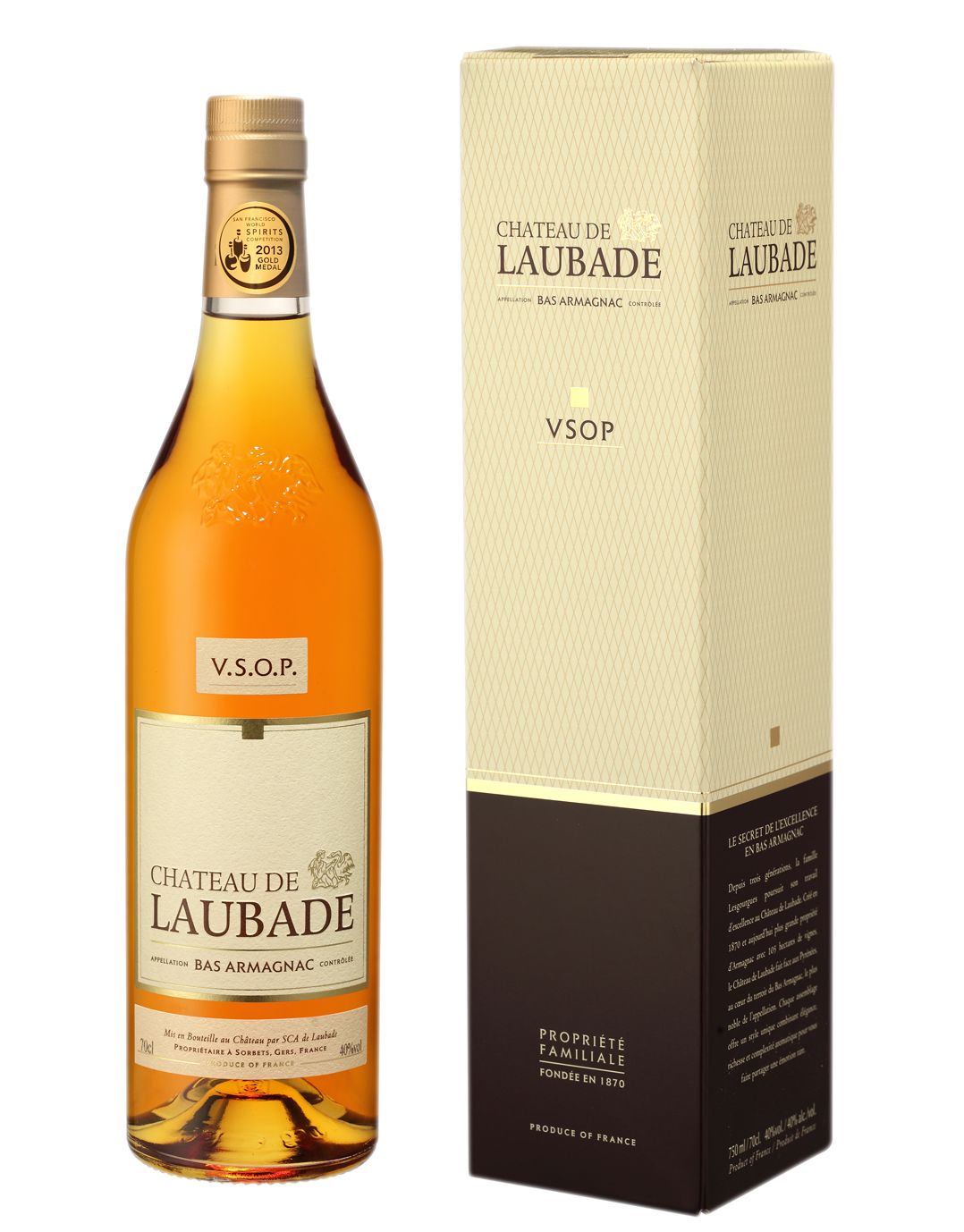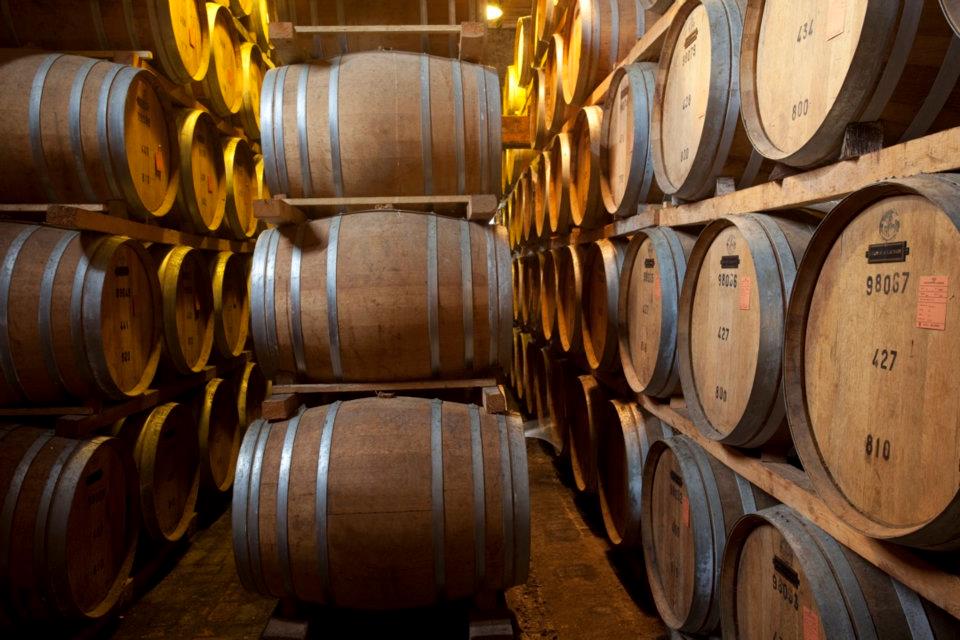 Christmas is almost upon us and we are really excited to announce that Chateau de Laubade VSOP Armagnac will be featured in our December 2015 Christmas subscribers kit.
Christmas is almost upon us and we are really excited to announce that Chateau de Laubade VSOP Armagnac will be featured in our December 2015 Christmas subscribers kit.
We were lucky enough to meet with Denis Lesgourgues while he was in London. He gave a us a fantastic insight into the Armagnac and we spent our evening sampling and sipping on all their full range. It was fascinating tasting the differences between the X.O, No.5, 1982, VSOP, Blanche…and the list goes on. We decided the VSOP probably suited our needs the best and was delicious in a Sidecar and other orange/citrus cocktails.
About Chateau de Laubade
With vintages and ageing stock dating back to 1855, Château de Laubade is renowned in the French and export markets for producing the highest quality armagnac. The vineyards, occupying 105 hectares, are situated in the top growth Bas Armagnac region; Ugni Blanc, Baco, Colombard and Folle Blanche are cultivated using organic methods, then vinified and distilled at the château before starting their long maturation. The wood used is Gascony oak, selected from local forests and dried in the open air for three years before being assembled into barrels.
V.S.O.P
By the French law, a VSOP Armagnac (as a VSOP Cognac) must have been aged a minimum of 4 years in oak casks. At Château de Laubade, it’s a blend of armagnacs of at least six years old, this VSOP shows aromas of violets and vanilla. It’s smooth and delicious and perfect for cocktails. It blends beautifully with orange to make a fantastic Sidecar and other variations.
- On average, their VSOP is twice as old most of the VSOP Armagnacs.
- VSOP is composed of more than 20 different brandies that are chosen from their 7 different cellars
- They choose to use the four different grapes in their VSOP because each single one brings so much in the final Armagnac. It increases complexity, fineness and overall balance on the nose and on the palate
What makes it so good..
The Baco (hybrid grape obtained by crossing Folle Blanche and Noah grapes), are their most “preferred” grape and the iconic grape of Armagnac, will bring the full body notes and its profile is able to be aged in new oak cask because it is strong and robust. It is important to distill this grape separately (as we do with the the grapes) in order to reinforce the specific characteristics of this unique grape. The only thing that you need to respect with Baco, is a sufficient ageing. This is why, most of our Baco casks used in the VSOP are at least 8 years and often 10/12 years old.
A few words about the other great grape of Armagnac: Folle Blanche (same as Gros Plant in Muscadet, Loire). This grape is the most aromatic and scented of the four. Like a perfume, it is flavourful but delicate at the same time. This is the reason why at Laubade, they never age this grape in new oak casks but prefer to use older casks : the woody and vanilla aromas as well as the tannins of a new oak cask would hide or “crush” the aromatic components of this grape. They put a lot of effort and care into ageing our casks of Folle Blanche as they demand attention and aeration (slow but controlled oxidation). 
Ugni Blanc and Colombard are the two other grapes. They are also used for “table” white wine production. At Château de Laubade, they do not produce table wine, but focus purely on what they do best: Bas Armagnac. Ugni Blanc (also known as Trebbiano in Italy) is almost the only grape used in Cognac. It is good, fine, able to age and always needed in Armagnac as well. At Laubade they use only a limited amount of Colombard as it brings some seductive white pepper notes and fresh flavours. But is is like “salt and pepper”, it is good as a final touch, not as the main ingredient.
To be the first to try this in our cocktail kit this December sign up now. Or grab a full size bottle available from Amathus.

